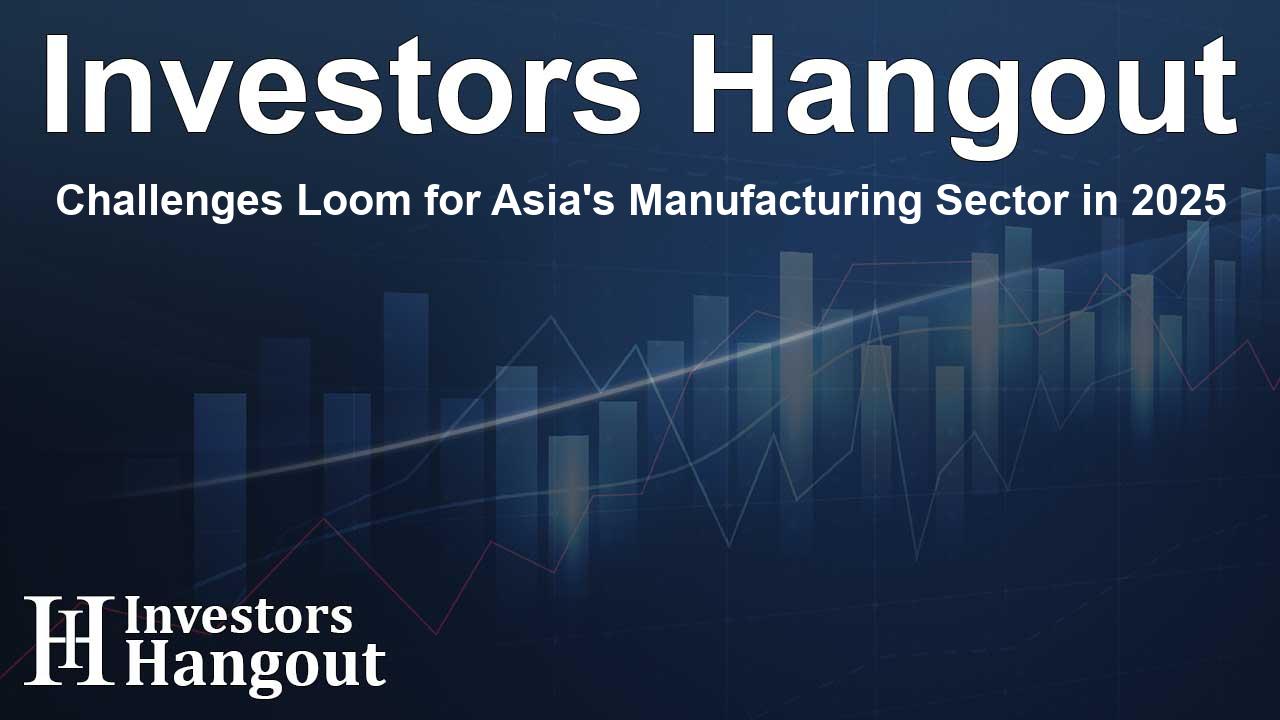Challenges Loom for Asia's Manufacturing Sector in 2025

Asia's Manufacturing Sector Faces Uncertain Future
As the year draws to a close, the manufacturing landscape across Asia reflects a notable weakening, signaling challenges ahead as we enter 2025. Key manufacturing sectors in the region are grappling with numerous obstacles, primarily stemming from rising trade uncertainties and decreasing demand in major economies like China.
Decline in Manufacturing Activity
Recent data has painted a sobering picture for the Asian manufacturing industry. Reports from various purchasing managers' indexes (PMIs) released in December indicate that factory activity in economic powerhouses such as China and South Korea is on the decline. Whilst there are signs of modest improvements in regions like Taiwan and Southeast Asia, the overall trend leans towards contraction.
Key Factors Impacting Manufacturing
One of the most significant contributors to this downturn is the looming prospect of renewed trade tensions, particularly with a potential second term for former President Trump. His administration's promise to impose hefty tariffs on imports, especially from key partners, raises concerns about repercussions for the entire region's economy.
China's PMI Highlights Underlying Issues
The latest Caixin/S&P Global manufacturing PMI for China experienced a drop to 50.5 in December, indicating only slight growth and falling short of analysts' expectations. This slowdown aligns with earlier reports that showed manufacturing activity stagnating, suggesting that the effects of government policies and external pressures have not yet stabilized the sector.
Regional Insights: South Korea's Challenges
In South Korea, the PMI revealed an alarming trend, showcasing a contraction in output at an accelerating pace during December. Uncertainties surrounding political stability, highlighted by a recent political crisis, further compound the challenges faced by businesses in this market.
Macroeconomic Policies and Flexibility
The central bank in South Korea has indicated that it will adopt a flexible approach towards monetary policy this upcoming year. This adaptability is seen as essential due to the volatile economic landscape and increasing political tensions that threaten to dampen business confidence.
Spots of Resilience Amidst Widespread Decline
While many countries in Asia reported decreased factory activity, Taiwan emerged as a beacon of hope. With its PMI reporting the highest growth in five months, Taiwan's manufacturing sector seems resilient amid the broader downturn, showcasing strong sales in key markets across Asia, Europe, and North America.
Singapore's Performance Signals Global Trends
Additionally, Singapore has positioned itself as a crucial indicator for global trade dynamics, revealing robust growth figures. The city-state's economy expanded at its fastest annual rate since the pandemic, largely driven by proactive exports before anticipated tariffs are enacted. This growth may signal positive trends for the broader region, even when juxtaposed against concerns in other markets.
Looking Ahead: Prospects for 2025
As Asia prepares to enter 2025, manufacturers must navigate a complex mix of challenges, including changing political landscapes and evolving trade dynamics. While some areas show signs of growth, a significant portion of the manufacturing sector remains vulnerable, highlighting the need for strategic adjustments in response to these evolving conditions.
Frequently Asked Questions
What are the key factors impacting Asia's manufacturing sector?
The primary factors include geopolitical tensions, particularly the threat of renewed tariffs from a potential second Trump presidency, and weak consumer demand, especially from China.
Which countries are showing signs of manufacturing growth?
Countries like Taiwan and Singapore have shown some resilience with positive PMI readings and strong export activity, contrasting with the overall decline in other regions.
How is South Korea's manufacturing sector performing?
South Korea's PMI indicates a contraction in manufacturing activity, exacerbated by political uncertainties and declining output levels.
What is the significance of Singapore's economic performance?
Singapore's robust growth suggests it may serve as a bellwether for global trade trends, showcasing how regional manufacturers can adapt to challenges.
What should manufacturers focus on as they approach 2025?
Manufacturers should remain agile, focus on adapting to changing policies, and explore new markets to sustain growth and navigate uncertainties ahead.
About Investors Hangout
Investors Hangout is a leading online stock forum for financial discussion and learning, offering a wide range of free tools and resources. It draws in traders of all levels, who exchange market knowledge, investigate trading tactics, and keep an eye on industry developments in real time. Featuring financial articles, stock message boards, quotes, charts, company profiles, and live news updates. Through cooperative learning and a wealth of informational resources, it helps users from novices creating their first portfolios to experts honing their techniques. Join Investors Hangout today: https://investorshangout.com/
Disclaimer: The content of this article is solely for general informational purposes only; it does not represent legal, financial, or investment advice. Investors Hangout does not offer financial advice; the author is not a licensed financial advisor. Consult a qualified advisor before making any financial or investment decisions based on this article. The author's interpretation of publicly available data shapes the opinions presented here; as a result, they should not be taken as advice to purchase, sell, or hold any securities mentioned or any other investments. The author does not guarantee the accuracy, completeness, or timeliness of any material, providing it "as is." Information and market conditions may change; past performance is not indicative of future outcomes. If any of the material offered here is inaccurate, please contact us for corrections.